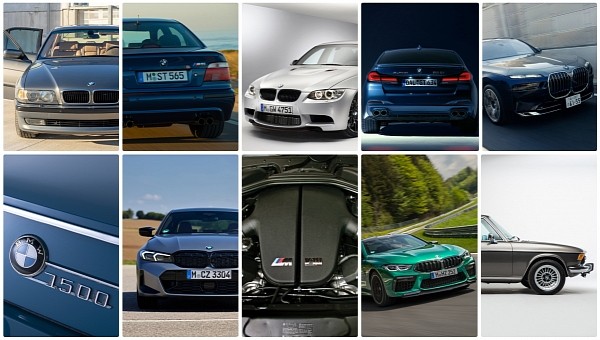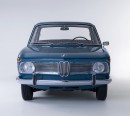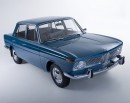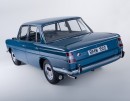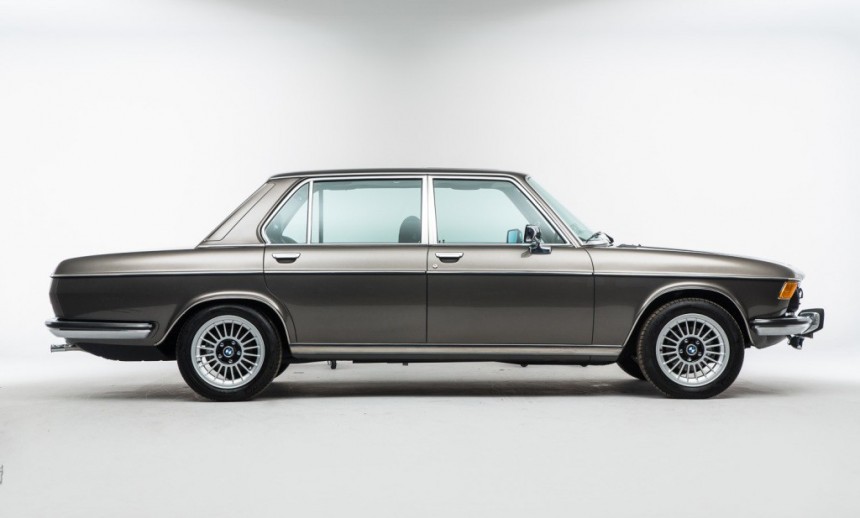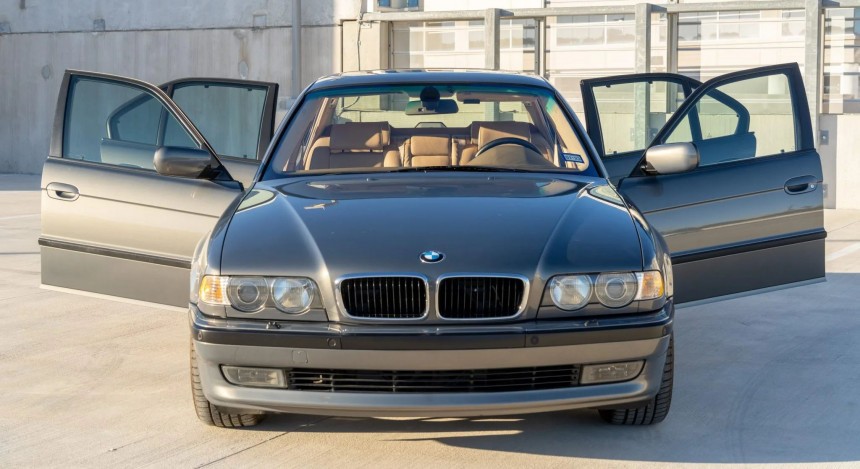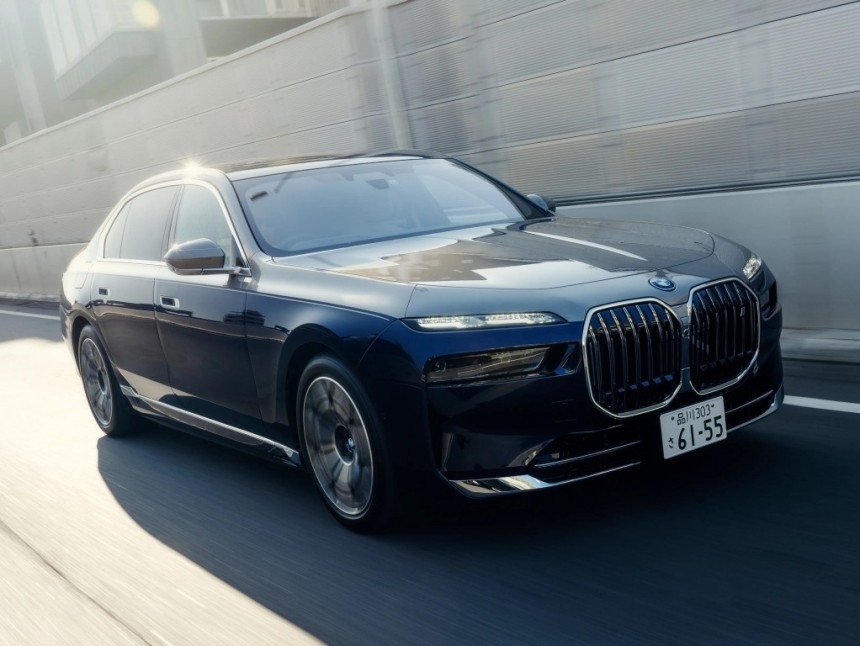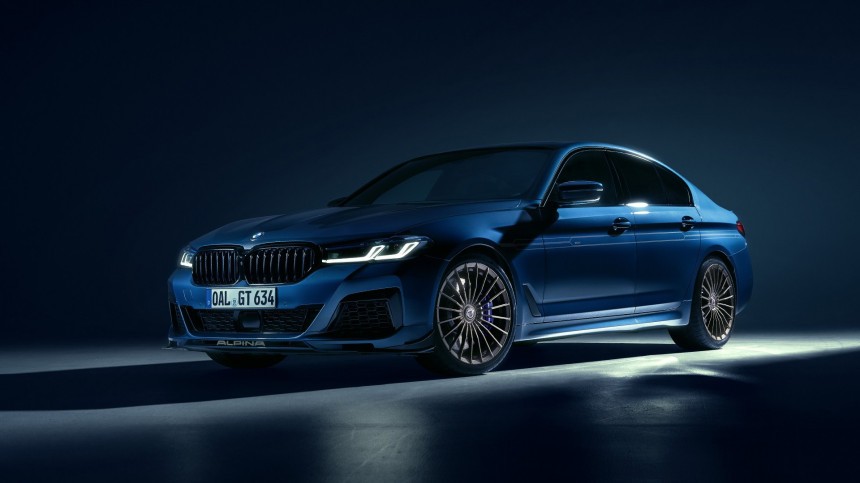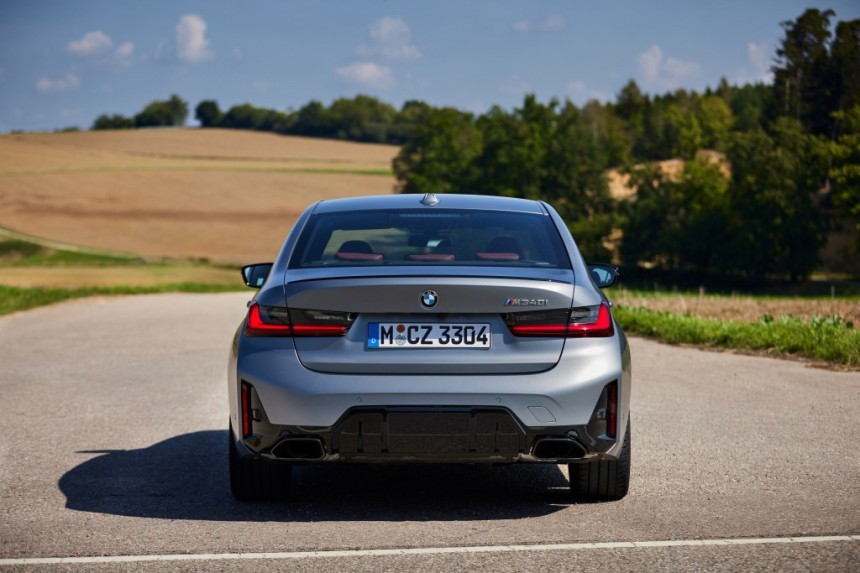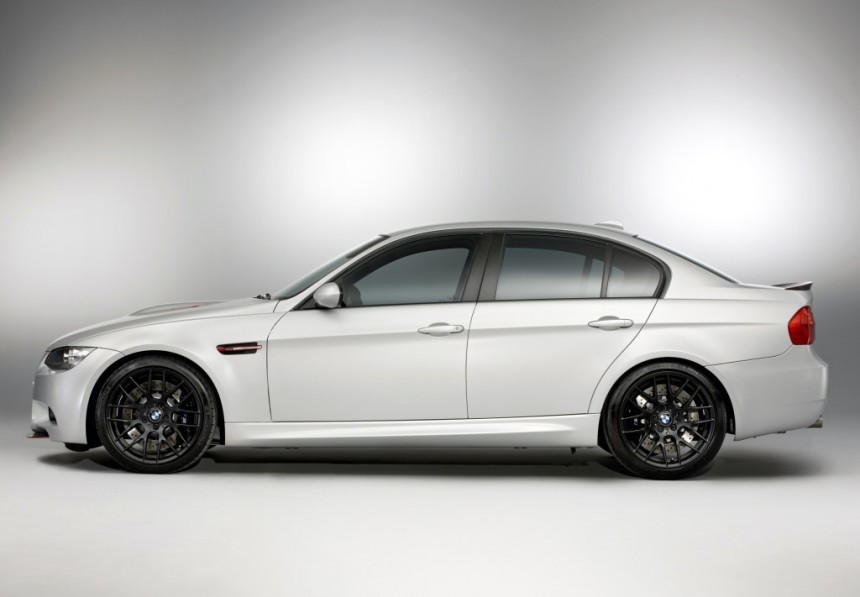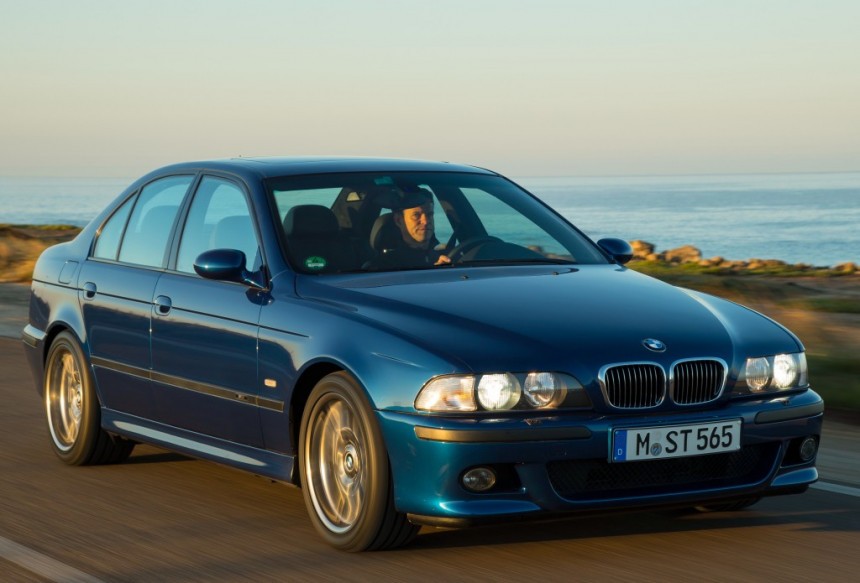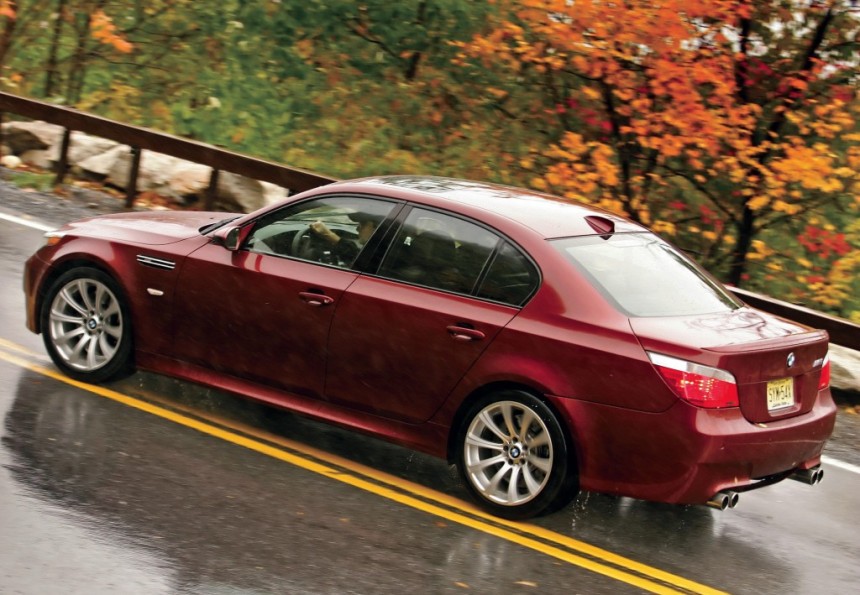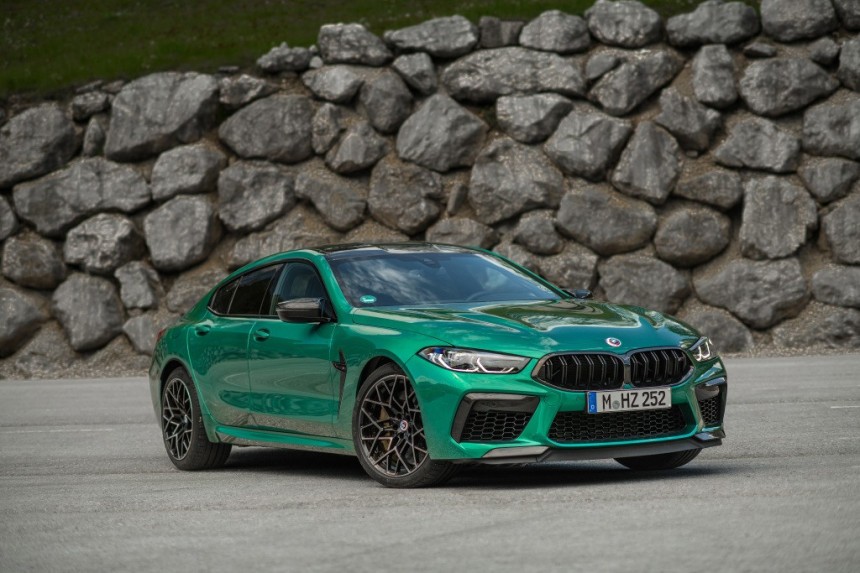BMW started life in the 1910s, originally specialized in aircraft engine production. Headquartered in Munich, the company started making two-wheeled vehicles in 1923. After purchasing Fahrzeugfabrik Eisenach, the Bavarian outfit became a true car manufacturer, although its first production car was nothing more than an Austin 7 built under license.
Come 1932, the first BMW-designed automobile rolled out in the form of the 3/20. It bears a striking resemblance to the Austin 7-based 3/15 yet features larger dimensions and a more powerful engine to boot.
In the aftermath of World War II, the Bavarian marque rolled out the 501 with a four-door sedan body style in addition to the more exotic two-door coupe and cabriolet. Sedans eventually became the bread and butter of BMW, which is currently investing billions over billions of euros into EVs, especially in the next-gen Neue Klasse.
BMW gave us a plethora of iconic sedans over the years, with each and every single one boasting that certain something about it. Our list of the 10 best sedans from the blue-and-white roundel kicks off with the original New Class, which laid the groundwork for the 5 Series.
Slotted between the 700 series that saved BMW from bankruptcy and 503-succeeding 3200 CS coupe, the New Class rolled out in 1962 with the 1500. Its name comes from the 1,499-cc displacement of the M10 engine, a four-cylinder lump that would be continuously upgraded into the late 80s. More than 3.5 million units were built.
The 1600, 1800, and 2000 later joined the sedan lineup. Among the firsts introduced by the New Class, the MacPherson strut-type front suspension is the more obvious highlight. Neue Klasse coupes introduced the Hofmeister kink into mass production. The stylistic element’s name comes from Wilhelm Hofmeister, who served as the head of design from 1955 through 1970.
As mentioned earlier, the sedans would be replaced by the E12 first-generation 5 Series. The coupes were succeeded by the oh-so-pretty E9, and the Neue Klasse also paved the way for the 02 Series that was eventually replaced by – no surprises here – the popular 3 Series.
Related to the New Class in many respects, the E3 family of executive sedans rolled out in 1968 with much pomp and circumstance. Internally referred to as E3, this line also birthed the E9 coupes that gave us the iconic 3.0 CSL.
Also known as New Six, this lineup branched into two distinct ones in the 1970s with the introduction of the E23 first-generation 7 Series and E24 first-generation 6 Series. Engine sizes ranged between 2.5 and 3.3 liters, and back then, BMW’s nomenclature truly denoted the displacement compared to the mumbo jumbo of today.
Said engines are members of the M30 family, developed from the M10 of the New Class. One of the most celebrated engines to bear the BMW logo, the M30 also powered the E9 and E24 in the European Touring Car Championship. The straight-six lump was adapted into the M1’s M88 engine, the first series-production BMW engine to rock a double overhead camshaft valvetrain.
BMWs designed under the supervision of Domagoj Dukec are somewhat controversial. That wasn’t the case in the good ol’ days of the E38, the first production vehicle to feature curtain airbags. Third-generation 7er firsts also include the first 7 Series available with diesel muscle, first Bimmer with a built-in television, and first European car available with satellite navigation.
Everyone can get behind the iconic design of this luxobarge, and in 750i attire, it was faster than the Mustang GT of that era despite being quite a bit heavier than Ford’s pony car. One of the most desirable traits of this generation of the 7 Series compared to the D2-gen Audi A8 and W140 Mercedes S-Class is handling.
Grippy tires, forged aluminum double wishbone suspension up front, and the rear multilink setup makes the E38 a seriously impressive handler that happily wafts along at Autobahn speeds in superlative comfort. A little over 340,000 units of the E38 were manufactured.
The i7 is the all-electric sibling of the latest and most controversial 7 Series yet due to its oversized grille and rather distracting interior. Although I’m not a fan of either, I agree that large kidney grilles work on a car this wide. It’s also customary for a 7er to feature plenty of tech, even more so if said 7er is an electric vehicle.
We’ve recently had the opportunity to test a range-topping i7 xDrive60 finished in BMW Individual Frozen Deep Gray, and the pros greatly outweigh the cons. My colleague describes the zero-emission luxobarge as a notch below the best Rolls-Royce has to offer, which is as high of a praise as BMW could wish for the i7.
The G70 also marks the bitter end of the V12-powered 7 Series. Also worthy of note, British automaker Rolls-Royce is slowly discontinuing its BMW-sourced V12 engine – internally referred to as N74 - in favor of all-electric powertrains. The recently unveiled Spectre can be considered Rolls-Royce’s take on the i7 xDrive60.
A fine car in every single respect, BMW’s current 5er is one of the nicest-looking Bimmers of the modern era. The M550i xDrive is a stupidly fast car, although it doesn’t hold a candle to the better-handling and pokier M5. Slotted between the standard M5 and M5 Competition Sport, the Alpina B5 GT offers the perfect mix of performance and luxury in a 5er-sized package.
Available in the form of a family-sized wagon as well, the B5 GT flaunts the most powerful engine in the company’s near-60-year history. A 4.4-liter V8 is the beating heart of this machine, delivering 625 horsepower and 850 Nm (make that 627 pound-feet) on full song.
Almost a match for the M5 Competition Sport’s 627 horsepower, the B5 GT is far torquier, which makes a world of difference in a straight line. Alpina quotes 3.4 seconds from zero to 100 kilometers per hour (62 miles per hour), with top speed rated at 330 kph (205 kph).
The more compact footprint of the 3er makes it an idea better in the twisties compared to the mid-sized 5er. The sweetest sport in the G20 lineup is – of course – the M340i xDrive which combines the usability of the 3 Series with some of the get-up-and-go thrills of the M3.
Also available as a five-door wagon, a.k.a. Touring in BMW jargon, the M340i xDrive is an M Performance sports sedan powered by the 2JZ of the 2020s. B58 is the codename of the inline-six turbo in question, which serves as the basis for the M-designed S58 in the M3.
Arguably the most user-friendly daily driver on our list, the M340i xDrive starts at 73,900 euros back home in Germany and $58,400 in the United States market. Exclusively automatic, the corner-carving sedan packs 382 horsepower and a stout 369 pound-feet (500 Nm).
Plenty of M3s deserve a place in a top 10 like this one, but only the E90 came with a high-revving V8 engine derived from that screamer of a V10 known as the S85. Joined by the E92 coupe and E93 convertible, this generation of the compact executive sports model further flaunts a dual-clutch tranny and iDrive infotainment.
Arguably the best-sounding M3 of the bunch, the E90 suffers from a number of problems. Codenamed S65, the naturally-aspirated V8 is known for issues ranging from oil cooling to rod bearings, throttle body actuators, the idle control valve, gaskets, and valve covers. These issues don’t need to put off any aspiring owner in the market for an M3 with a good maintenance record.
The E90/E92/E93 were replaced in 2013 with a six-cylinder M3, although turbocharged as opposed to the naturally-aspirated sixer from the E46 generation. The G80 sedan and G81 wagon also flaunt six cylinders and - for the first time ever in the M3 - all-wheel drive.
For the E39 generation, the M5 leveled up to eight cylinders in the guise of the S62 engine. The high-performance variation of the M62 was also used by the bite-the-back-of-your-hand beautiful Z8 and two supercars from the defunct British automaker Ascari.
BMW introduced double VANOS in the S62, meaning variable valve timing for the intake and exhaust sides of the engine. Electronically actuated individual throttle bodies help this fellow sound properly good, and the semi-dry sump oiling system keeps the S62 properly lubricated in the twisties. Better still, the S62-powered E39 M5 came exclusively with a manual transmission.
Produced on the 5 Series assembly line in Dingolfing rather than BMW M’s facility in Garching, this generation of the M5 ended production in 2003. Just over 20,000 examples of the breed were finished, of which just under 2,600 units were made in right-hand drive.
Its reputation may be hindered by a few rough edges, which include the SMG automated manual transmission, but the E60 sedan and E61 wagon are very special by M5 standards. Both are powered by the naturally-aspirated V10 from which the M3’s V8 was created, and the sole reason for BMW going down this route is Formula 1.
The V10 era is fabulous from the standpoint of induction and exhaust sounds alone, but remember that BMW’s Formula 1 involvement further includes the legendary 1.5-liter turbo inline-four engine capable of more than 1,400 horsepower in qualifying trim. The M12/13 turbo-powered Brabham of Nelson Piquet helped the Brazilian racing driver secure the drivers’ title back in 1983.
To this very day, BMW gets a lot of flak for offering a six-speed manual in very few numbers to the North American market alone. Only 1,364 sedans received the three-pedal transmission, which is marginally slower than the repulsive SMG but much better in terms of driving enjoyment and on upshifts/downshifts to boot.
The M8 Competition Gran Coupe may be 10 ponies down compared to the M5 Competition Sport, but given the way it looks and its place in BMW’s lineup, nobody would be criticized for picking the 8er to the detriment of the 5er. Capable of 60 miles per hour (97 kilometers per hour) in just 3.0 seconds, the sedan-bodied model develops a mighty 617 horsepower and 553 pound-feet (750 Nm).
Internally referred to as F93, this fellow costs a cool $136,800 sans destination charge and optional extras. And boy, said options are pricey in their own right. For example, M carbon-ceramic brakes and the M carbon-fiber bucket seats cost $8,500 and $4,500 in the U.S.
There's hearsay suggesting the 8 Series and 4 Series merging into the next-generation 6 Series, with the 8 Series Gran Coupe reportedly soldiering on as a member of the 7 Series family. The M7 Gran Coupe or whatever it will be called - if it ever happens - should get the plug-in hybrid twin-turbo V8 setup of the G90 M5.
In the aftermath of World War II, the Bavarian marque rolled out the 501 with a four-door sedan body style in addition to the more exotic two-door coupe and cabriolet. Sedans eventually became the bread and butter of BMW, which is currently investing billions over billions of euros into EVs, especially in the next-gen Neue Klasse.
BMW gave us a plethora of iconic sedans over the years, with each and every single one boasting that certain something about it. Our list of the 10 best sedans from the blue-and-white roundel kicks off with the original New Class, which laid the groundwork for the 5 Series.
10. BMW Neue Klasse
The 1600, 1800, and 2000 later joined the sedan lineup. Among the firsts introduced by the New Class, the MacPherson strut-type front suspension is the more obvious highlight. Neue Klasse coupes introduced the Hofmeister kink into mass production. The stylistic element’s name comes from Wilhelm Hofmeister, who served as the head of design from 1955 through 1970.
As mentioned earlier, the sedans would be replaced by the E12 first-generation 5 Series. The coupes were succeeded by the oh-so-pretty E9, and the Neue Klasse also paved the way for the 02 Series that was eventually replaced by – no surprises here – the popular 3 Series.
9. BMW New Six (E3)
Also known as New Six, this lineup branched into two distinct ones in the 1970s with the introduction of the E23 first-generation 7 Series and E24 first-generation 6 Series. Engine sizes ranged between 2.5 and 3.3 liters, and back then, BMW’s nomenclature truly denoted the displacement compared to the mumbo jumbo of today.
Said engines are members of the M30 family, developed from the M10 of the New Class. One of the most celebrated engines to bear the BMW logo, the M30 also powered the E9 and E24 in the European Touring Car Championship. The straight-six lump was adapted into the M1’s M88 engine, the first series-production BMW engine to rock a double overhead camshaft valvetrain.
8. BMW 7 Series (E38)
Everyone can get behind the iconic design of this luxobarge, and in 750i attire, it was faster than the Mustang GT of that era despite being quite a bit heavier than Ford’s pony car. One of the most desirable traits of this generation of the 7 Series compared to the D2-gen Audi A8 and W140 Mercedes S-Class is handling.
Grippy tires, forged aluminum double wishbone suspension up front, and the rear multilink setup makes the E38 a seriously impressive handler that happily wafts along at Autobahn speeds in superlative comfort. A little over 340,000 units of the E38 were manufactured.
7. BMW i7 xDrive60 (G70)
We’ve recently had the opportunity to test a range-topping i7 xDrive60 finished in BMW Individual Frozen Deep Gray, and the pros greatly outweigh the cons. My colleague describes the zero-emission luxobarge as a notch below the best Rolls-Royce has to offer, which is as high of a praise as BMW could wish for the i7.
The G70 also marks the bitter end of the V12-powered 7 Series. Also worthy of note, British automaker Rolls-Royce is slowly discontinuing its BMW-sourced V12 engine – internally referred to as N74 - in favor of all-electric powertrains. The recently unveiled Spectre can be considered Rolls-Royce’s take on the i7 xDrive60.
6. BMW Alpina B5 GT (G30)
Available in the form of a family-sized wagon as well, the B5 GT flaunts the most powerful engine in the company’s near-60-year history. A 4.4-liter V8 is the beating heart of this machine, delivering 625 horsepower and 850 Nm (make that 627 pound-feet) on full song.
Almost a match for the M5 Competition Sport’s 627 horsepower, the B5 GT is far torquier, which makes a world of difference in a straight line. Alpina quotes 3.4 seconds from zero to 100 kilometers per hour (62 miles per hour), with top speed rated at 330 kph (205 kph).
5. BMW M340i xDrive (G20)
Also available as a five-door wagon, a.k.a. Touring in BMW jargon, the M340i xDrive is an M Performance sports sedan powered by the 2JZ of the 2020s. B58 is the codename of the inline-six turbo in question, which serves as the basis for the M-designed S58 in the M3.
Arguably the most user-friendly daily driver on our list, the M340i xDrive starts at 73,900 euros back home in Germany and $58,400 in the United States market. Exclusively automatic, the corner-carving sedan packs 382 horsepower and a stout 369 pound-feet (500 Nm).
4. BMW M3 (E90)
Arguably the best-sounding M3 of the bunch, the E90 suffers from a number of problems. Codenamed S65, the naturally-aspirated V8 is known for issues ranging from oil cooling to rod bearings, throttle body actuators, the idle control valve, gaskets, and valve covers. These issues don’t need to put off any aspiring owner in the market for an M3 with a good maintenance record.
The E90/E92/E93 were replaced in 2013 with a six-cylinder M3, although turbocharged as opposed to the naturally-aspirated sixer from the E46 generation. The G80 sedan and G81 wagon also flaunt six cylinders and - for the first time ever in the M3 - all-wheel drive.
3. BMW M5 (E39)
BMW introduced double VANOS in the S62, meaning variable valve timing for the intake and exhaust sides of the engine. Electronically actuated individual throttle bodies help this fellow sound properly good, and the semi-dry sump oiling system keeps the S62 properly lubricated in the twisties. Better still, the S62-powered E39 M5 came exclusively with a manual transmission.
Produced on the 5 Series assembly line in Dingolfing rather than BMW M’s facility in Garching, this generation of the M5 ended production in 2003. Just over 20,000 examples of the breed were finished, of which just under 2,600 units were made in right-hand drive.
2. BMW M5 (E60) with a manual transmission
The V10 era is fabulous from the standpoint of induction and exhaust sounds alone, but remember that BMW’s Formula 1 involvement further includes the legendary 1.5-liter turbo inline-four engine capable of more than 1,400 horsepower in qualifying trim. The M12/13 turbo-powered Brabham of Nelson Piquet helped the Brazilian racing driver secure the drivers’ title back in 1983.
To this very day, BMW gets a lot of flak for offering a six-speed manual in very few numbers to the North American market alone. Only 1,364 sedans received the three-pedal transmission, which is marginally slower than the repulsive SMG but much better in terms of driving enjoyment and on upshifts/downshifts to boot.
1. BMW M8 Competition Gran Coupe (F93)
Internally referred to as F93, this fellow costs a cool $136,800 sans destination charge and optional extras. And boy, said options are pricey in their own right. For example, M carbon-ceramic brakes and the M carbon-fiber bucket seats cost $8,500 and $4,500 in the U.S.
There's hearsay suggesting the 8 Series and 4 Series merging into the next-generation 6 Series, with the 8 Series Gran Coupe reportedly soldiering on as a member of the 7 Series family. The M7 Gran Coupe or whatever it will be called - if it ever happens - should get the plug-in hybrid twin-turbo V8 setup of the G90 M5.
